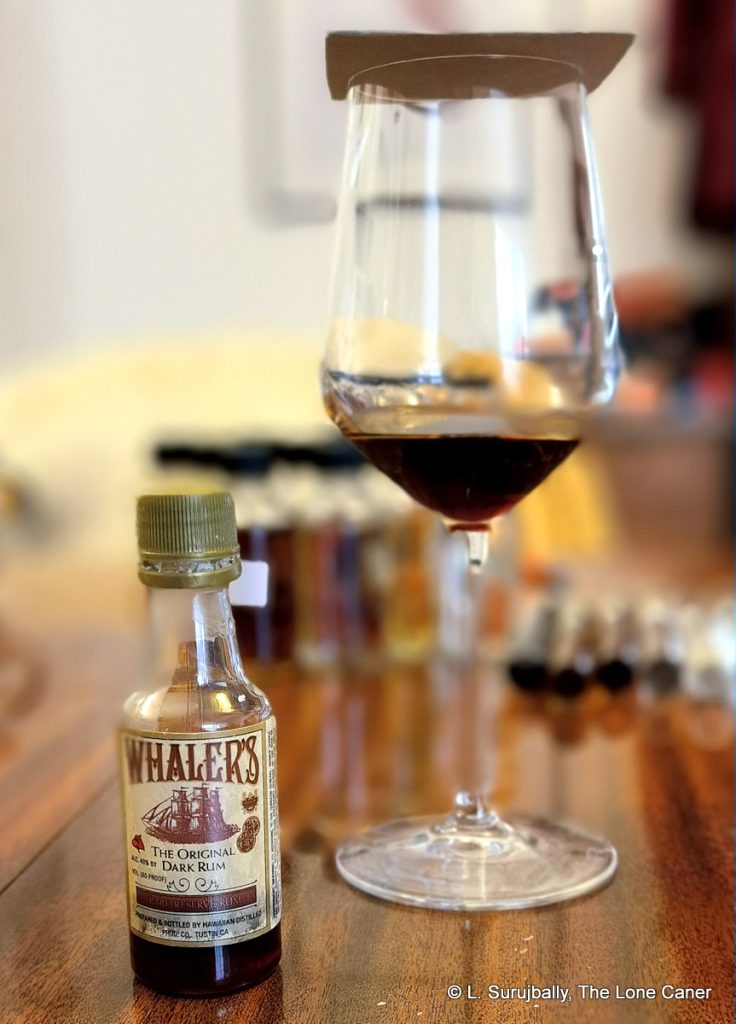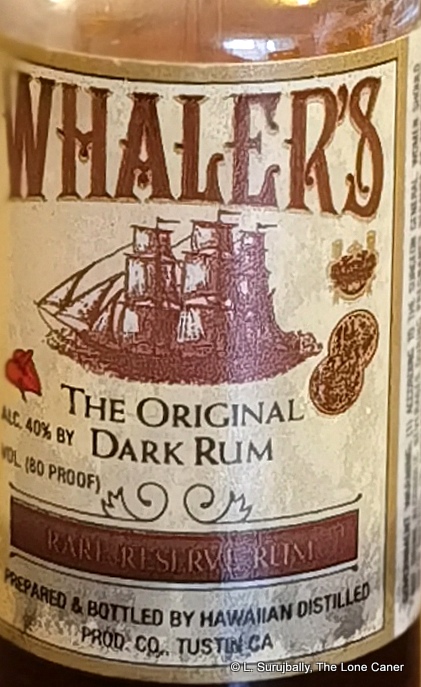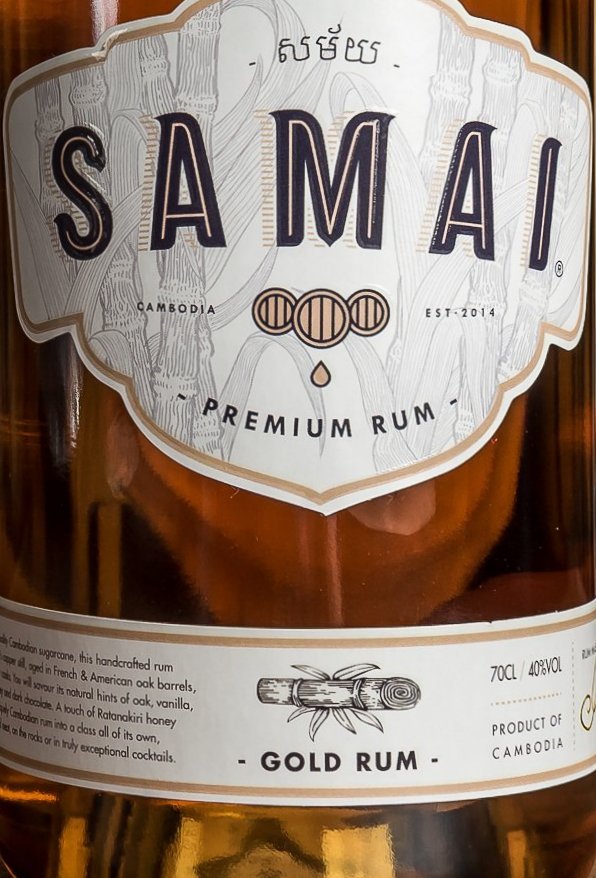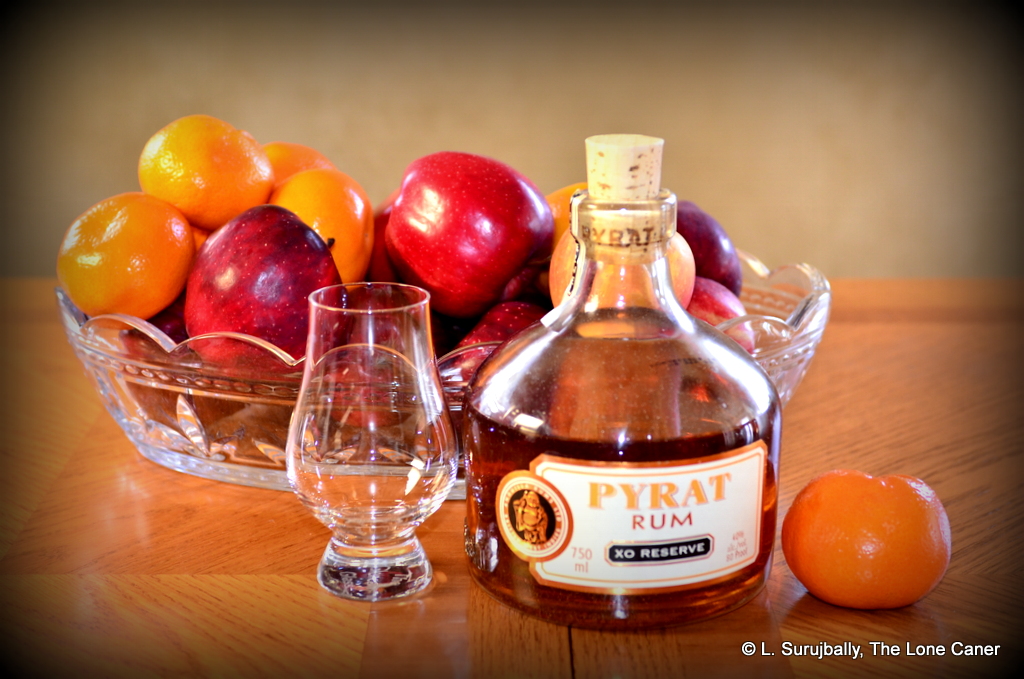 Rumaniacs Review No.145 | 0981
Rumaniacs Review No.145 | 0981
Whaler’s as a rum brand is still being made after more than half a century, and apparently undeterred by its complete lack of anything resembling real quality, has not only kept the Original Dark Rum recipe – the vanilla-bomb that I reviewed way back in 2010 – but actually expanded the supermarket line of their rums to include a vanilla rum, a white rum, a “topping rum” (whatever that is) and other flavoured variations that comfortably cater to the bottom shelf and are almost guaranteed to make another generation of Americans swear off rum forever.
It is no longer made in Hawaii, if it ever was – at best one could say it may have been a recipe from there; and guesses as to its true origin vary as widely as the USVI, Phillipines, or California (I think it’s just some nameless industrial facility churning out neutral alcohol on contract). The producer, if you recall, is the same outfit that also makes the Hana Bay rum, which has much of the same fanciful background and origin stories and lack of proveable provenance. Still, it does happen occasionally that rums which suck today suck a little less in the old days when they had some people with shine in their eyes and not quite so much cynicism on the factory floor (Captain Morgan is one such) making the rum. So it’s worth trying to see if it was different back in the day when Hawaiian Distilled Products from California was behind the brand.
Colour – dark red-brown
Strength – 40%
Nose – It giveth hope. First, red grapefruit and some rancid olive oil, and then all the simple aromas deemed “rum-like” back in the last century come marching in like Christian soldiers. Brown sugar, molasses (just a bit), vanilla (just a lot). It’s not entirely bad though, and also has cherries, damp dark earth, dust and a little plastic.
Palate – The taste taketh hope away. It’s almost all vanilla, alcohol, brown sugar, caramel, licorice. Simple and uncomplicated and at least it goes down easy (that may be whatever sweetening or smoothening agents they added). But there’s not a whole lot beyond that going on.
Finish – Warm and firm, it must be conceded. Caramel, anise, coconut shavings, even more vanilla. It’s possible a few citrus notes were there, just too faint to make any kind of statement.
Thoughts – The rum is the ancestor to simple, dark, uninteresting, ten-buck rums you can find anywhere, often in cheap plastic bottles, and whose only purpose is to deliver a shot of alcohol today that you’ll regret tomorrow. There’s nothing to distinguish it at all, except that there seems to be rather less vanilla in this one than in the one from 2010 (which I tried again just to see). There’s also nothing to mark it as different from another Original Dark Rum from this period, put into a bottle with a greenish label. But I’ll save that “review” for another day.
(73/100) ⭐⭐½
Back in the eighties, Whaler’s and Hana Bay were made by Hawaiian Distillers, a Hawaiian corporation that was in business since the 1970s, and was a subsidiary of Hawaiian Distilled Products Co out of Tustin California (and this is what is on the label). Before 1980 it was mainly manufacturing tourist items, including ceramics and specialty Polynesian Liqueurs – it’s defunct now and all traces of it have vanished: only head cases like me actively seek out their rums from yesteryear any longer, and the question as to where exactly the rum was distilled remains unanswered.
In the early 2010s when I first looked at Whaler’s, it was being made in Kentucky by the brand owners at the time, Heaven Hill, who had acquired the brand from the Levecke Corporation in 2002. Some time in the last ten years, Hana and Whaler’s returned to Hawaii…Maui specifically, where Hali’imaile was founded in 2010 by a branch of the Levecke family and has its premises. Surprisingly, given the sugar industry, family connections and tropical climate, rum is not actually their focus – whisky, vodka and gin are, with the distillery also making rums of zero distinction.
As of 2023, Hali’imaile Distilling Company is the distillery of the company’s products, yet their site doesn’t mention Whaler’s, Hana Bay or Mahina rums at all (these are the other brands they own and supposedly make). It may be a contract rum, but nobody really cares enough to find out, including, apparently, not even those who sell it. I’m not surprised.

 Now here’s an interesting standard-proofed gold rum I knew too little about from a country known mostly for the spectacular temples of Angor Wat and the 1970s genocide. But how many of us are aware that Cambodia was once a part of the Khmer Empire, one of the largest in South East Asia, covering much of the modern-day territories of Thailand, Vietnam, Laos and Viet Nam, or that it was once a protectorate of France, or that it is known in the east as Kampuchea?
Now here’s an interesting standard-proofed gold rum I knew too little about from a country known mostly for the spectacular temples of Angor Wat and the 1970s genocide. But how many of us are aware that Cambodia was once a part of the Khmer Empire, one of the largest in South East Asia, covering much of the modern-day territories of Thailand, Vietnam, Laos and Viet Nam, or that it was once a protectorate of France, or that it is known in the east as Kampuchea?
